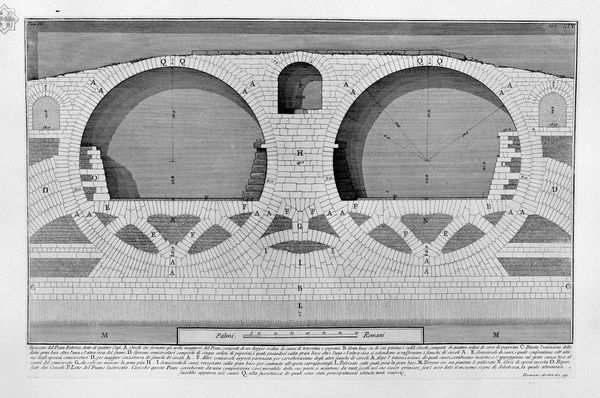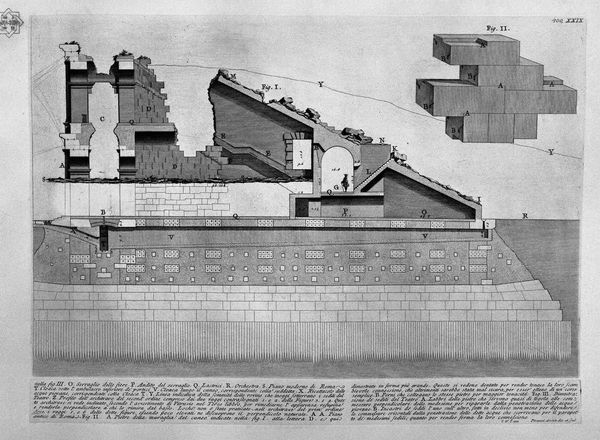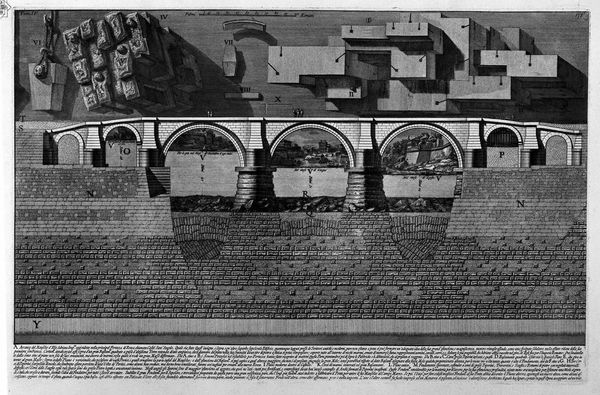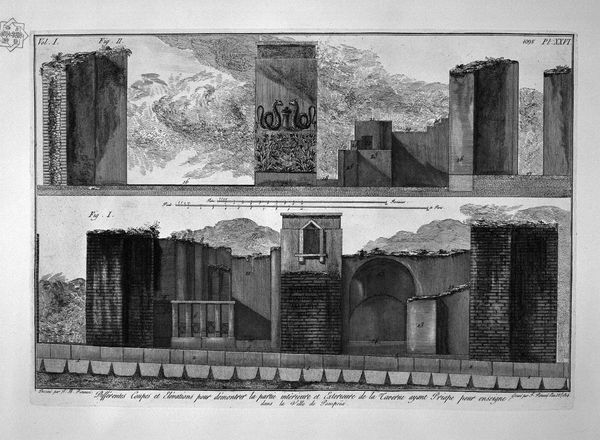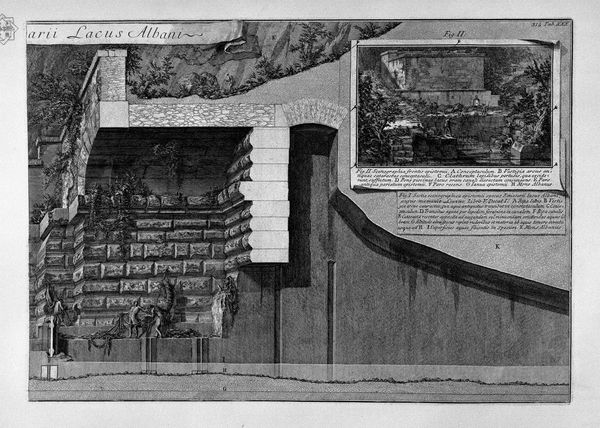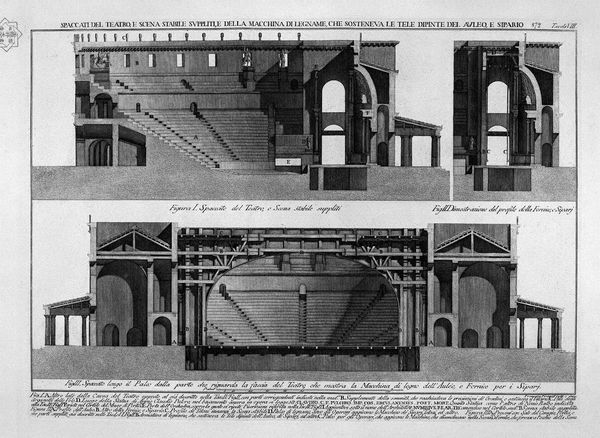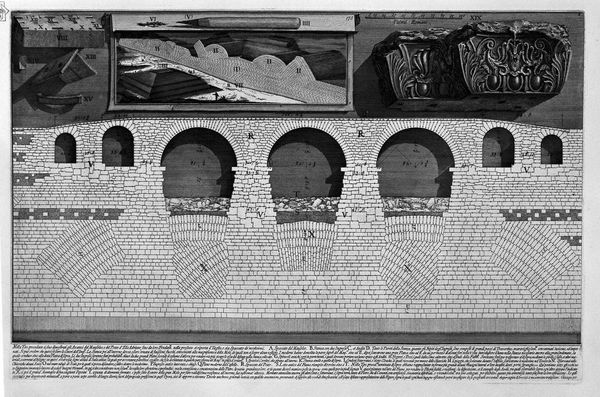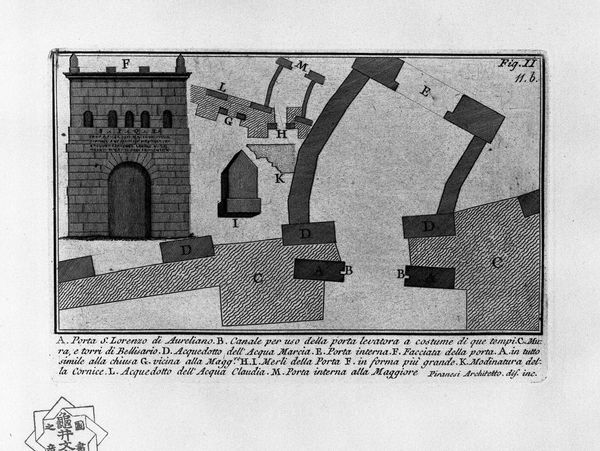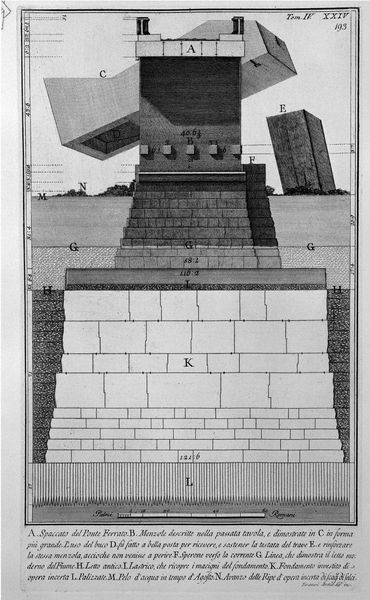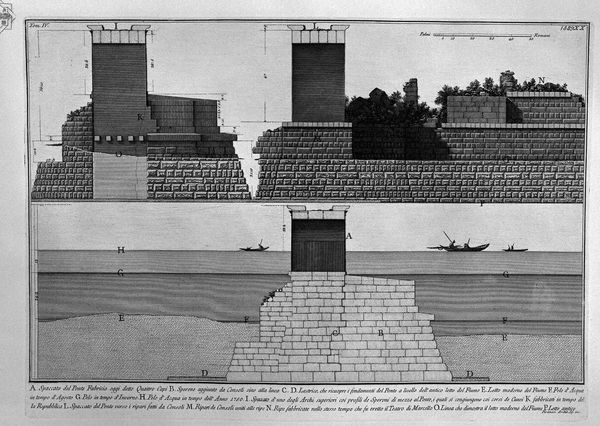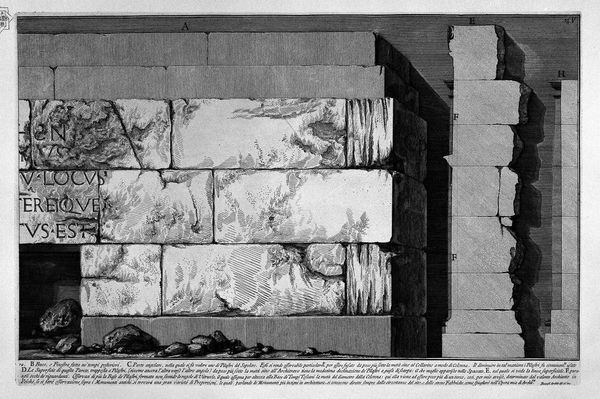
The Roman antiquities, t. 4, Plate XXIII. Plant and inscriptions of Cestius Bridge.
0:00
0:00
drawing, etching, engraving, architecture
#
drawing
#
etching
#
historic architecture
#
romanesque
#
black and white
#
arch
#
engraving
#
architecture
#
historical building
Copyright: Public domain
Editor: Here we have "The Roman Antiquities, t. 4, Plate XXIII. Plant and inscriptions of Cestius Bridge," an etching by Giovanni Battista Piranesi. It’s all incredibly detailed, almost scientific in its precision, and I’m struck by how he manages to make architecture feel almost… archaeological? What do you see in this piece, something that might elude a less trained eye? Curator: Ah, Piranesi. He’s not just showing us a bridge; he’s peeling back layers of time, isn’t he? Notice how he combines accurate architectural rendering with… well, a romantic’s soul. The precise lines showcase the Roman engineering genius, but that dramatic lighting, those almost theatrical shadows? It's as if he's conjuring the ghost of the bridge itself. I wonder, do you feel a sense of loss here, for something grand that's also decaying? Editor: I do, now that you mention it. The cross-sectioned view feels like an autopsy, revealing the inner workings while also hinting at mortality. Was Piranesi perhaps commenting on the decline of Roman power? Curator: It's tempting to read it that way, isn’t it? Although, he was more invested in capturing the magnificence of Rome’s past, perhaps a nostalgic look backwards in a period of renewed classicism. Instead of only illustrating decline, perhaps it is just more of a desire to record for posterity. Look at all the inscriptions. Those aren't just decorations but records. Editor: That’s true; I didn’t think of it as a form of preservation. He's documenting, as much as he is creating art. So, it’s a little less about a statement on the decline and more about ensuring it won't be forgotten. I learned something new today. Curator: Exactly! He is capturing the granduer. It's why, centuries later, we can still ponder not just a bridge, but also the echoes of an empire, suspended in ink and paper. A journey back, not to simply observe ruins, but to feel their breath once more.
Comments
No comments
Be the first to comment and join the conversation on the ultimate creative platform.
